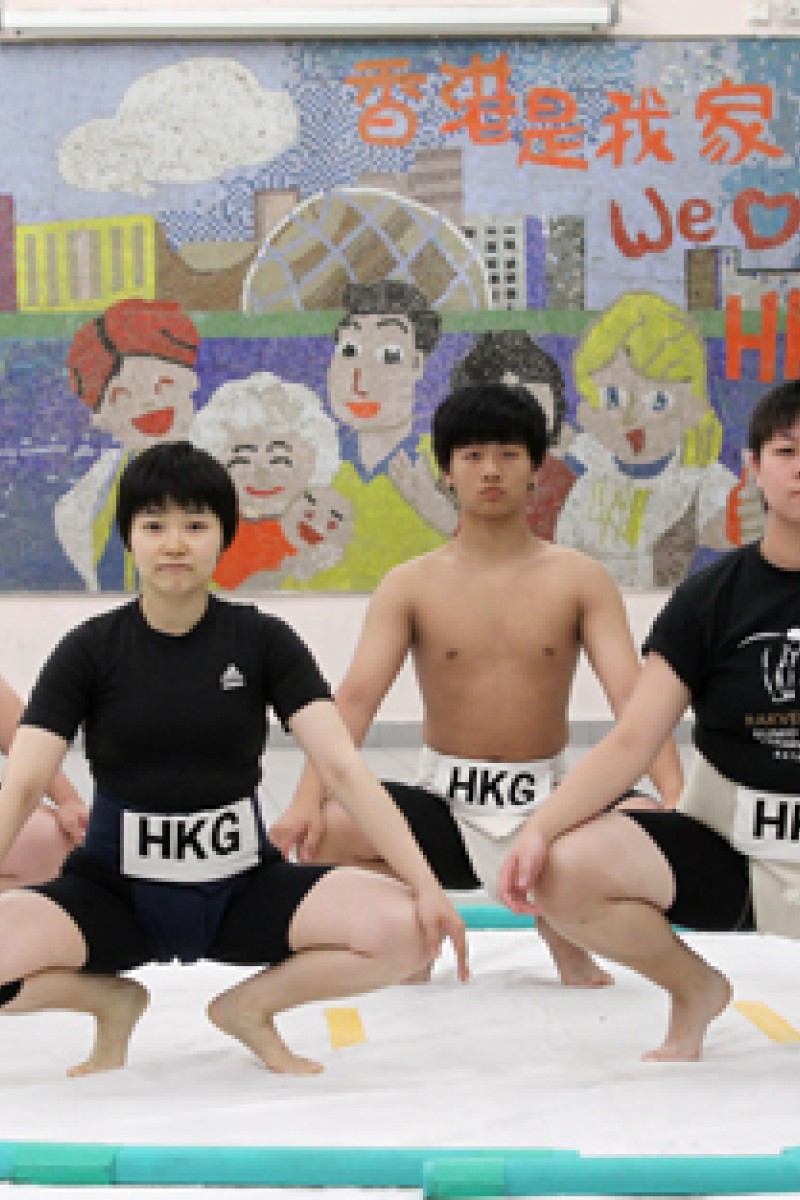 Young sumo stars (from left) Jacky Shea Kin-tung, Mak Ka-po, Cheng Hoi-wang, Leung Hoi-min and Cheung Long.
Young sumo stars (from left) Jacky Shea Kin-tung, Mak Ka-po, Cheng Hoi-wang, Leung Hoi-min and Cheung Long.Sumo was introduced to Hong Kong more than 20 years ago, and the Hong Kong Sumo Association (HKSA) was set up in 1991. As with other combat sports, athletes compete in their respective weight categories.
The rules are simple, and HKSA president, Mak Yiu-cheung, says the sport is very exciting.
"It is easy to understand the sport. Once an athlete is pushed out of the ring, or falls down, or touches the ground with any part of his body besides his feet, he is defeated. It can happen one or two seconds [into] a match," says Mak.
HKSA focuses on youth development - 70 per cent of its members are teenagers. Cheng Hoi-wang, 13, a Form Two student from Lok Sin Tong Leung Chik Wai Memorial School, is a rising young star. He has won three consecutive titles at the Hong Kong Junior Sumo Championships. "In sumo, we need to lift rivals out of the ring," he says. "At first [in Primary Four], I lifted people weighing the same as me [less than 50kg], and after years of training, I can now lift a person weighing around 100kg," says the athlete who currently weighs 76kg.
Hoi-wang's teammate, Cheung Long, 15, also took up sumo in Primary Four, and has won a gold and two silver medals at the past three Hong Kong Junior Sumo Championships. The Form Two student from Buddhist Yip Kei Nam Memorial College says he learned an important lesson after a defeat at the beginning of his career. "I was pushed out of the ring while I was still thinking about what to do," he says. Sumo requires lightning quick reflexes.
While sumo is not just for men, it took some time for 19-year-old Leung Hoi-man's family to accept her hobby. "People think sumo athletes don't wear clothes, so it's not suitable for females," she says. "My family had the same misconception, until they first saw me competing live, at the fourth Asian Women's Sumo Championships in Thailand in 2007. Now, they fully support me."
Unlike men, women wear T-shirts and cycling shorts, along with their mawashi - the traditional sumo belt.
Mak Ka-po, Mak's 28-year-old daughter, also joined the sumo team, winning a bronze medal in the Thai competition. "I was amazed when I saw women from dad's sumo team in action around 10 years ago," she says. "I wanted to try, too."
It's hard to believe that Ka-po, who is very slim and just 1.58 metres tall, is a sumo athlete. But she says: "Weight can actually ... slow down movements in the ring. So what we do is monitor our weight and keep it within a certain range."
This year, the athletes may have the chance to compete in front of a home crowd, as Hong Kong is hosting the World Championships for the first time on October 27 and 28. "A sand dohyo [sumo ring] will be set up at Southorn Stadium in Wan Chai and leading sumo athletes from all over the world will gather in Hong Kong [to battle for] top honours," says Mak.
Our local athletes had better tighten their mawashi.
Sumo athletes Cheng Hoi-wang (left) and Cheung Long in action
